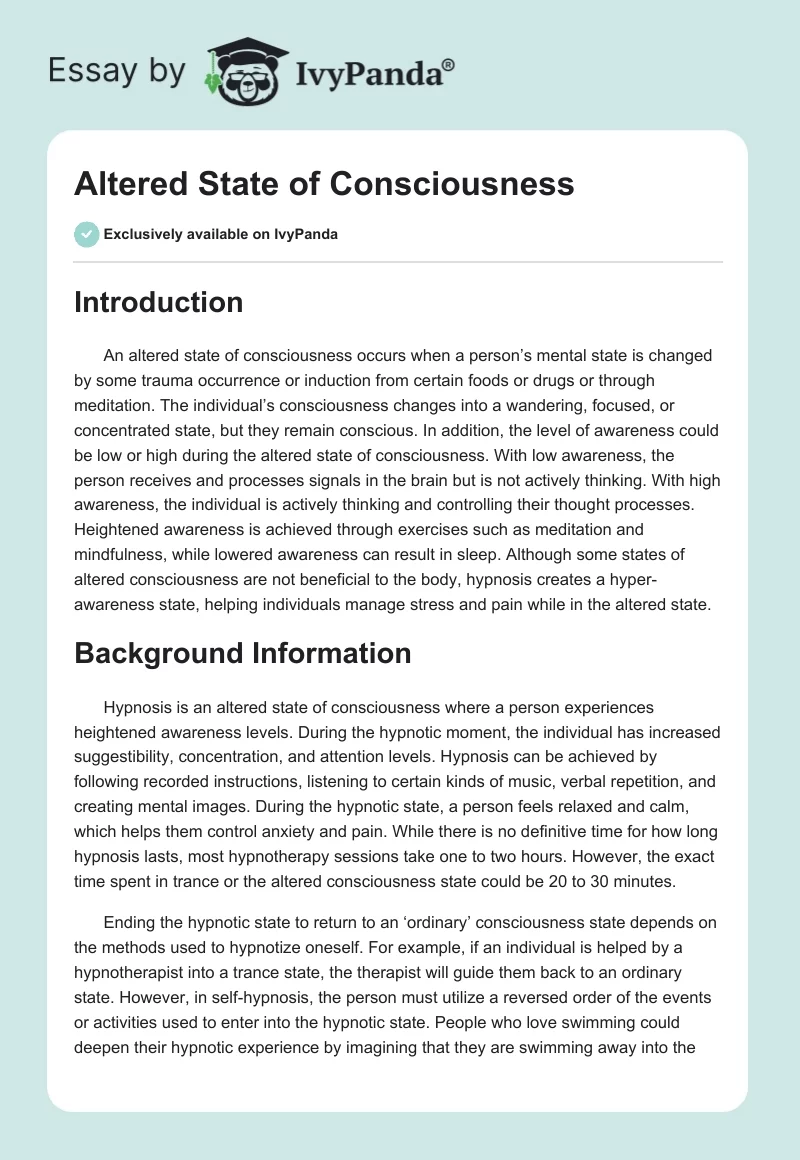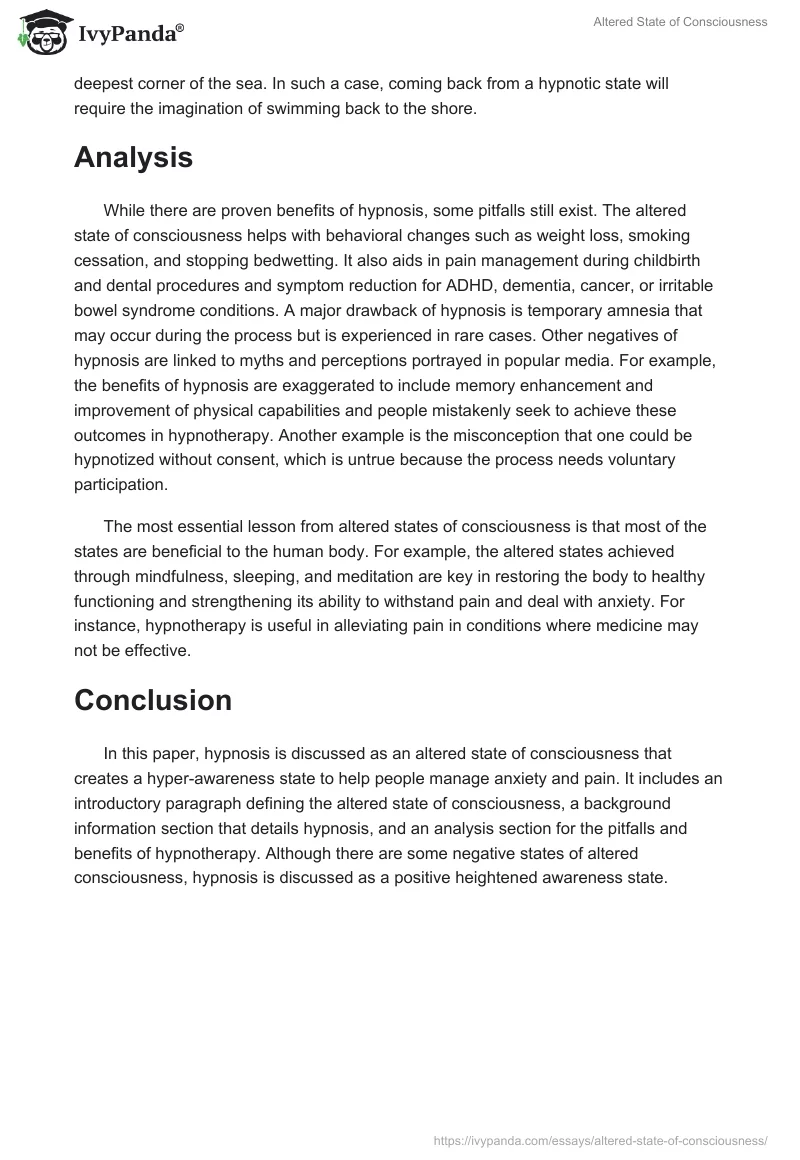Introduction
An altered state of consciousness occurs when a person’s mental state is changed by some trauma occurrence or induction from certain foods or drugs or through meditation. The individual’s consciousness changes into a wandering, focused, or concentrated state, but they remain conscious. In addition, the level of awareness could be low or high during the altered state of consciousness. With low awareness, the person receives and processes signals in the brain but is not actively thinking. With high awareness, the individual is actively thinking and controlling their thought processes. Heightened awareness is achieved through exercises such as meditation and mindfulness, while lowered awareness can result in sleep. Although some states of altered consciousness are not beneficial to the body, hypnosis creates a hyper-awareness state, helping individuals manage stress and pain while in the altered state.
Background Information
Hypnosis is an altered state of consciousness where a person experiences heightened awareness levels. During the hypnotic moment, the individual has increased suggestibility, concentration, and attention levels. Hypnosis can be achieved by following recorded instructions, listening to certain kinds of music, verbal repetition, and creating mental images. During the hypnotic state, a person feels relaxed and calm, which helps them control anxiety and pain. While there is no definitive time for how long hypnosis lasts, most hypnotherapy sessions take one to two hours. However, the exact time spent in trance or the altered consciousness state could be 20 to 30 minutes.
Ending the hypnotic state to return to an ‘ordinary’ consciousness state depends on the methods used to hypnotize oneself. For example, if an individual is helped by a hypnotherapist into a trance state, the therapist will guide them back to an ordinary state. However, in self-hypnosis, the person must utilize a reversed order of the events or activities used to enter into the hypnotic state. People who love swimming could deepen their hypnotic experience by imagining that they are swimming away into the deepest corner of the sea. In such a case, coming back from a hypnotic state will require the imagination of swimming back to the shore.
Analysis
While there are proven benefits of hypnosis, some pitfalls still exist. The altered state of consciousness helps with behavioral changes such as weight loss, smoking cessation, and stopping bedwetting. It also aids in pain management during childbirth and dental procedures and symptom reduction for ADHD, dementia, cancer, or irritable bowel syndrome conditions. A major drawback of hypnosis is temporary amnesia that may occur during the process but is experienced in rare cases. Other negatives of hypnosis are linked to myths and perceptions portrayed in popular media. For example, the benefits of hypnosis are exaggerated to include memory enhancement and improvement of physical capabilities and people mistakenly seek to achieve these outcomes in hypnotherapy. Another example is the misconception that one could be hypnotized without consent, which is untrue because the process needs voluntary participation.
The most essential lesson from altered states of consciousness is that most of the states are beneficial to the human body. For example, the altered states achieved through mindfulness, sleeping, and meditation are key in restoring the body to healthy functioning and strengthening its ability to withstand pain and deal with anxiety. For instance, hypnotherapy is useful in alleviating pain in conditions where medicine may not be effective.
Conclusion
In this paper, hypnosis is discussed as an altered state of consciousness that creates a hyper-awareness state to help people manage anxiety and pain. It includes an introductory paragraph defining the altered state of consciousness, a background information section that details hypnosis, and an analysis section for the pitfalls and benefits of hypnotherapy. Although there are some negative states of altered consciousness, hypnosis is discussed as a positive heightened awareness state.


